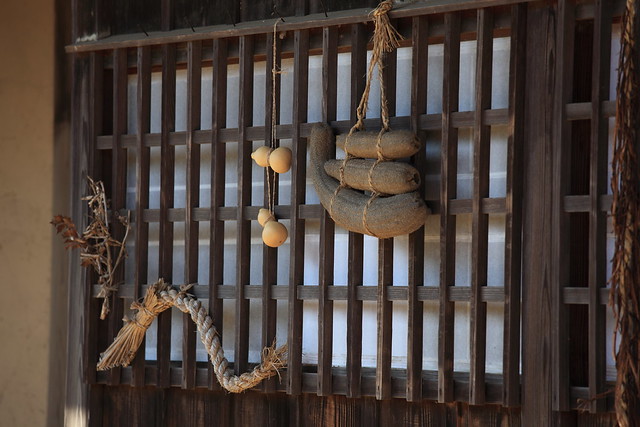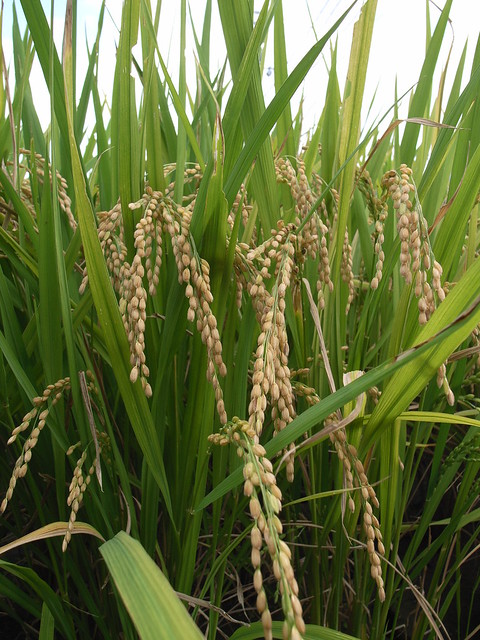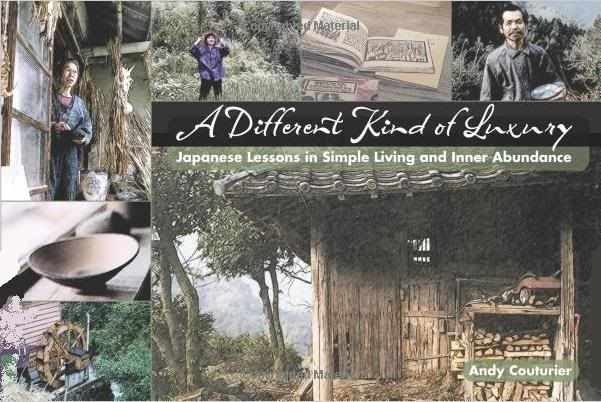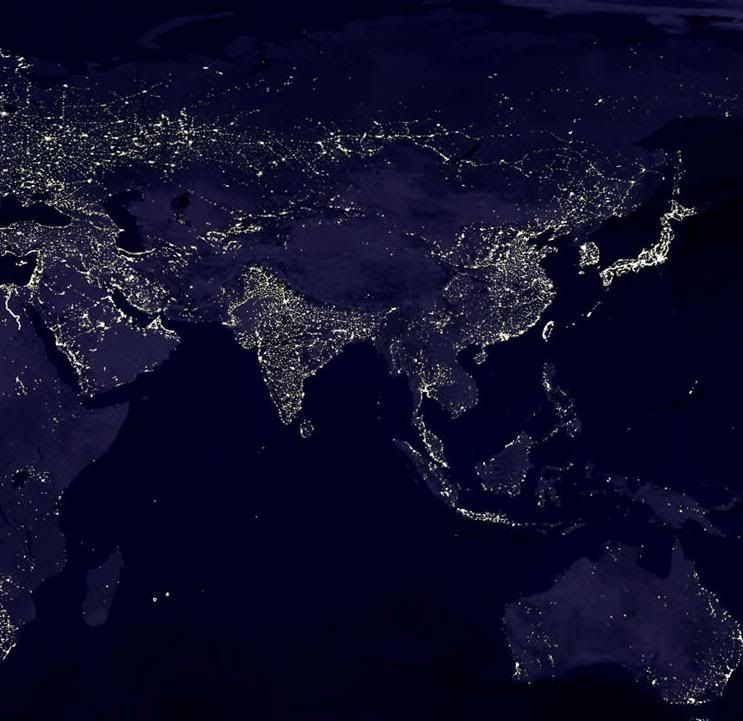
photo source: flickr TANAKA juuyoh
From "A Different Kind of Luxury: Japanese Lessons in Simple Living and Inner Abundance" by Andy Couturier:
I am reading Walden Pond now and though it's interesting, I was hoping that there'd be more about growing and cooking food. A life in and with nature should be fifty percent about food. ...As serendipity would have it, I just finished reading "A Different Kind of Luxury: Japanese Lessons in Simple Living and Inner Abundance" (2010) by Andy Couturier. Andy lived in Japan for four years, chronicling eleven remarkable individuals who opted out of the rat race to live low cost but culturally rich lives in rural Japan. They chose time over money as a lifestyle which led them to grow their own food, giving them the luxury of contemplating life's greater questions. It is a richly beautiful book that would appeal to anyone who might want to slow down, have time to know who they are and why they are here, work with their hands, grow their own food, and live simply.
People keep finding themselves in an unforgiving matrix of overwork, stress, and unwilling complicity in the destruction of the earth. ---Osamu Nakamura
Now he switches on one of the three lightbulbs in his house and starts to grind together cumin, ginger, salt, garlic, and red pepper in a rough-hewn stone bowl...
Growing rice was an integral part of each person's life. All used organic methods, some used "natural farming" methods where weeds were allowed to grow, and all connected deeply with the process.

photo source: flickr matsuyuki
If you plant one seed of rice it produces ten stalks, and on each stalk you get one hundred new grains of rice each. So from that one seed of rice you get one thousand grains of rice. That's much better than putting money in a bank. ---Masanori Oe
And planting rice by hand makes me feel happy and at peace. When I cut the stalks for the harvest, I feel a connection to my ancestors, to their lives and their world. Also, I like knowing where my food comes from. ---Atsuko Watanabe
Koichi Yamashita has gone from being a university professor in India with a Ph.D. in Hindu philosophy to what he calls "an artist of farming." He has found a living philosophy and a feeling of sympathy with the entire life-world in that most basic act, growing his food. ... now, Yamashita says, he finds most of his wisdom in the rice fields.
Yet when I'm by myself, out in the rice fields, working with the plants, I am simply glad. I understand that I myself am living, that I am in possession of a living spirit. In the rice paddy with the plants you just naturally develop a feeling of compassion, of sympathy, of love.
The Earth, as everyone knows, has aged for 3,600,000,000 or 4,000,000,000 years. From this fact, we see, we who are living now are the result of the Earth being that old. One soul of one person, and one seed of rice or wheat is the fruit or crystallization of that many years of this Earth. When I understood, or rather felt, this fact I was so delighted that I had no words at all to explain it. --- Koichi Yamashita

Most of the eleven people in this book had traveled to India or Nepal in their 20's. Their observations and introspections from those travels led to their decisions to live with a different value system and way of life when they returned. Their first objective was to find an abandoned rural farm house with a plot of land where they could live and grow their own rice, be artists, be off grid, and slow down. This was doable for them since Japan experienced a massive rural exodus over past decades resulting in abandoned farms, some with large old crafted houses, renting cheaply. After settled, the eleven were talented in a variety of arts which included pottery, painting, woodblock printing and book making, writing, cooking, flute and music.
This book is largely philosophical without ignoring agriculture, since most were self-sufficient in growing their own food. Another agricultural quote from Koichi Yamashita not to be missed was this:
Koichi Yamashita's four objectives for farming: (1) Be lazy. Save labor by cutting corners and not doing unnecessary work. (2) Be stingy. Don't spend any money. Forget about the economic system. (3) Be safe. Don't use poisons on your food. (4) Don't be greedy with the soil. Determine its actual fertility and don't try to get a bigger harvest than you ought to by using too much fertilizer. If you understand what your soil can really produce, you will have a stable harvest from year to year.These people chose a value-system different from the prevailing one of their modern consumerist Japanese culture, and it just so happens that they were also anti-nuclear activists. They took part in educating the public about the nuclear issues. One was successful at preventing a waste facility to be built nearby. Since the recent 9.0 earthquake and nuclear disintegration, it looks as if their nuclear concerns were prescient.
In addition to rice and wheat, we mainly grow potatoes, millet, beans, and peas, all of which can be stored for a long time. As for vegetables, we only have a small kitchen garden.
Practicing what they preached, these individuals chose lifestyles that utilized little energy. One had a total of three light bulbs. Some had no refrigerators. Disturbing to those of us concerned about future energy issues, one listed gasoline as a product he needed but couldn't produce himself. It is true that even those who live so simply desire gas to visit relatives, go to stores, go to work, take kids to school, and so on. It is the last product anyone wants to give up.
In this next night satellite photograph, you will see that Japan is the most lit up country at night time on this planet.

photo source: geology.com
A little smaller than California, Japan has four times as many people, 25% of whom are over 65 years old. Their population density is about 339 persons per square kilometer and 67% live in urban areas. Their birth-rate is 1.2 and they do not allow immigration. There are 55 operating nuclear reactors in Japan with a number of others in construction or being planned.
Some of the eleven people featured in this book lived in Japan's northern mountainous regions, not so far from the recent earthquake, refinery fire, and nuclear disasters. The author's website is providing updates from some of the individuals.
The ways of old-Japan are rich, wise, and full of lessons for us, including in the areas of art, farming, and permaculture. Best wishes to each of these individuals and their families now as they persevere, as their people have always persevered.
K. McDonald
For more:
Book/Author Website and Blog
Stone Bridge Press Author Page
Author's page on wikipedia
Ito Akira
